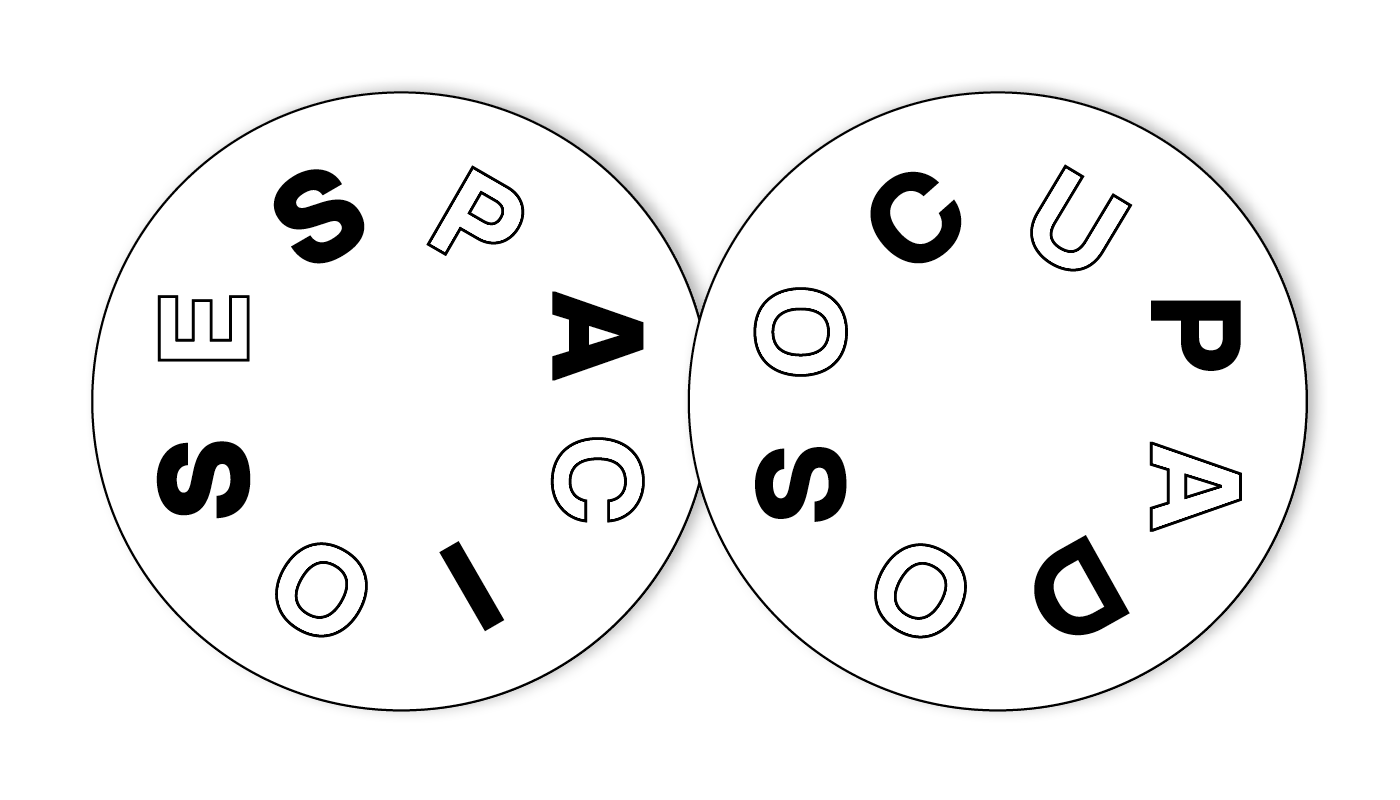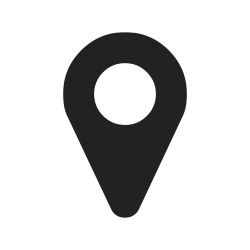«Las noticias sobre el estado del mundo pasan y se desdibujan en un paisaje de pesadilla». El arte como viaje «Transitas la vida a través del arte».
«Viajo para descubrir mi Geografía», es un trabajo procesual en el que reflexiono sobre la existencia individual a través de una serie de elementos que configuran mi entorno doméstico. Un tren de juguete recorre, con una cámara al dorso, mi universo íntimo, ampliándolo en una pantalla. Un autorretrato a través de mis objetos cotidianos.
Haré obras presentes. Porque siempre vivo en el presente, porque no conozco el futuro y no tengo la suerte de recordar el pasado. Trabajaré con las realidades más cercanas. Las cuales, puedo estar seguro de que suceden. Que no son rumores, que no pertenecen a otros. Trazaré una arqueología de mi presente, una geografía de mí mismo. «Si consideramos que no tenemos nada más allá de nuestras sensaciones, entonces debemos explorarlas como si fueran lugares desconocidos». Estas obras tienen una especie de sentimiento de melancolía provocado por las ausencias de lo que ya ha sucedido.
Vivimos en el mundo de la movilidad, donde viajar es muy fácil. Ganchos de seducción para escapar de uno mismo. Pero … ¿por qué huir, por qué viajar? Si la monotonía viene de mí, siempre irá conmigo. Si la libertad no se encuentra dentro de mí, no la encontraré en ningún lado. Mi primer deseo fue escapar de la monotonía, de lo que sé, de lo que es mío, de lo que quiero. Pero cuando llegué a países paradisíacos, paisajes bucólicos en la imaginación de la monotonía de mi día a día, solo encontré a otros que querían huir hacia mi monótono origen.
Si consideramos que no tenemos nada más allá de nuestras sensaciones, necesitamos explorarlas como si fueran lugares desconocidos. Sin mapas ní guías, solo tenemos las rutas que nos vamos marcando. «No importa qué tan alto vayamos y no importa qué tan bajo vayamos, nunca salimos de nuestras sensaciones». Nunca escapamos de nosotros mismos. Solo hay un paisaje: el que dibujamos con nuestros sentidos. En las culturas orientales el sabio desarrolla un espíritu contemplativo con el que no necesita dejar su morada para comprender el universo entero. Todos los libros pueden estar en la relectura de un libro. Todas las músicas pueden estar en una obra musical.
Somos lo que leemos. Nuestro pensamiento se estructura a partir de la información y el conocimiento que adquirimos, en gran parte, a través de la lectura. En esta serie de trabajos acumulé cronológicamente toda la prensa que leí durante los últimos años. Hice excavaciones para establecer las relaciones entre eventos pasados y tratar de definir dónde estaba en ese momento para entenderme a mí mismo. La mayoría de los descubrimientos fueron fragmentarios e incompletos, al igual que mis recuerdos. La percepción que tenemos del pasado es vaga y sesgada.
Sabemos que las metáforas en torno a nuestra memoria se han referido innumerables veces al estrato; hablar de la memoria de la tierra en geología, o de la humanidad en antropología, implica necesariamente una alusión a la configuración estratificada de los acontecimientos temporales. La convicción de que el paso del tiempo se esconde de alguna manera, algo que no solo se deja atrás, sino que es irrecuperable y remite (como proyección del futuro) a una relación inevitable con la Muerte.
Por tanto, el tiempo también puede entenderse como decisivo. En algunas de las piezas se manifiesta un vacío temporal como elemento iconográfico crucial. Una parte importante de las obras se muestra como etapas de un evento que podría continuar, no como algo terminado, sino como un momento intermedio, detenido por su propia decisión; una forma de abordar el tiempo como algo fragmentario, capaz de enlazar momentos, pero nunca como una linealidad inquebrantable.
«Die Nachrichten über den Zustand der Welt ziehen vorbei und verschwimmen zu einer Albtraumlandschaft». Kunst als Reise «Man reist durch das Leben durch die Kunst».
«Ich reise, um meine Geografie zu entdecken» ist eine prozesshafte Arbeit, in der ich über die individuelle Existenz durch eine Reihe von Elementen nachdenke, die meine häusliche Umgebung gestalten. Eine Spielzeugeisenbahn fährt mit einer Kamera auf dem Rücken durch mein intimes Universum und vergrößert es auf einer Leinwand. Ein Selbstporträt durch meine Alltagsgegenstände. Ich werde aktuelle Arbeiten durchführen. Weil ich immer in der Gegenwart lebe, weil ich die Zukunft nicht kenne und nicht das Glück habe, mich an die Vergangenheit zu erinnern. Ich werde mit den nächstgelegenen Realitäten arbeiten. Ich kann sicher sein, dass sie passieren. Dass sie keine Gerüchte sind, dass sie nicht anderen gehören. Ich werde eine Archäologie meiner Gegenwart aufspüren, eine Geografie meiner selbst. «Wenn wir davon ausgehen, dass wir nichts haben, was über unsere Empfindungen hinausgeht, dann müssen wir sie erforschen, als wären es unbekannte Orte». Diese Werke haben eine Art von Melancholie, die durch die Abwesenheit des bereits Geschehenen hervorgerufen wird.
Wir leben in einer Welt der Mobilität, in der das Reisen sehr einfach ist. Verführerische Haken, um vor sich selbst zu fliehen. Aber … warum fliehen, warum reisen? Wenn Monotonie von mir ausgeht, wird sie immer mit mir gehen. Wenn die Freiheit nicht in mir ist, werde ich sie nirgendwo finden. Mein erster Wunsch war es, der Monotonie zu entfliehen, dem, was ich kenne, dem, was mir gehört, dem, was ich liebe. Aber als ich in paradiesischen Ländern ankam, bukolischen Landschaften in der Vorstellung von der Monotonie meines Alltags, fand ich nur andere, die in meine monotone Herkunft flüchten wollten.
Wenn wir davon ausgehen, dass wir nichts haben, was über unsere Empfindungen hinausgeht, müssen wir sie erforschen, als wären sie unbekannte Orte. Ohne Karten oder Führer haben wir nur die Routen, die wir uns selbst setzen. «Egal, wie hoch wir steigen und wie tief wir fallen, wir kommen nie aus unseren Empfindungen heraus». Wir entkommen niemals vor uns selbst. Es gibt nur eine Landschaft: die, die wir mit unseren Sinnen zeichnen. In den östlichen Kulturen entwickelt der Weise einen kontemplativen Geist, mit dem er seinen Wohnort nicht zu verlassen braucht, um das ganze Universum zu verstehen. Alle Bücher können beim Wiederlesen eines Buches gelesen werden. Alle Musik kann in einem Musikstück enthalten sein.
Wir sind, was wir lesen. Unser Denken wird durch die Informationen und das Wissen strukturiert, das wir zum großen Teil durch Lesen erwerben. In dieser Werkreihe habe ich chronologisch alle Presseerzeugnisse zusammengetragen, die ich in den letzten Jahren gelesen habe. Ich habe Ausgrabungen vorgenommen, um die Beziehungen zwischen vergangenen Ereignissen herzustellen und zu versuchen, zu definieren, wo ich mich in diesem Moment befand, um mich selbst zu verstehen. Die meisten Entdeckungen waren bruchstückhaft und unvollständig, ebenso wie meine Erinnerungen. Unsere Wahrnehmung der Vergangenheit ist vage und voreingenommen.
Wir wissen, dass sich die Metaphern rund um unser Gedächtnis, unzählige Male auf die Schicht bezogen haben; in der Geologie vom Gedächtnis der Erde oder in der Anthropologie vom Gedächtnis der Menschheit zu sprechen, impliziert zwangsläufig eine Anspielung auf die Schichtung zeitlicher Ereignisse. Die Überzeugung, dass der Lauf der Zeit irgendwie verborgen ist, etwas, das nicht nur zurückgelassen, sondern unwiederbringlich ist und (als Projektion der Zukunft) auf eine unvermeidliche Beziehung zum Tod verweist.
Daher kann die Zeit auch als entscheidend verstanden werden. In einigen Werken manifestiert sich eine zeitliche Leere als entscheidendes ikonografisches Element. Ein wichtiger Teil der Arbeiten wird als Etappen eines Ereignisses gezeigt, das weitergehen könnte, nicht als etwas Abgeschlossenes, sondern als ein Zwischenmoment, das durch seine eigene Entscheidung gestoppt wird; eine Art, sich der Zeit als etwas Fragmentarisches anzunähern, das in der Lage ist, Momente miteinander zu verbinden, aber niemals als eine unumstößliche Linearität.
«I journey to discover my Geography» is a work in progress in which I reflect on individual existence through a series of elements that make up my domestic environment. A toy train travels, with a camera on its back, my intimate universe, magnifying it on a screen. A self-portrait through my everyday objects.
The sociologist Michel de Certeau describes in The Invention of the Everyday: «The everyday is invented with a thousand ways of poaching». Daily creativity to fight against the power struggles that take place in our most familiar surroundings. The left overs of a dinner, a table, an unmade bed, some old newspapers… These are some of the objects that build my geography, many of them have always accompanied me and with them I have recreated my memory.
I will do present works. Because I always live in the present, because I do not know the future and I am not lucky enough to remember the past. I will work with the nearest realities. In which I can be sure that things happen. That they are not hearsay, that they do not belong to others. I will trace an archeology of my present, a geography of myself. «If we consider that we do not have anything beyond our sensations, we then must explore them as if they were unknown places». These works have a kind of feeling of melancholy caused by the absences of what has already taken place.
We live in the world of mobility, where travelling is very easy. Hooks of seduction for escaping oneself. But … why running away, why travelling? If the monotony comes from me, it will always go with myself. If freedom is not found within me, I will not find it anywhere. My first wish was to escape from the monotony, from what I know, from what it is mine, from what I want. But when I arrived in paradisiacal countries, bucolic landscapes in the imagination of the monotony of my day to day, I only found others who wanted to run away towards my monotonous origin.
If we consider that we have nothing beyond our sensations, we need to explore them as if they were unknown places. Without maps and without guides, we only have the routes that we are marking ourselves. «No matter how high we go and no matter how low we go, we never get out of our sensations». We never escape of ourselves. There is only one landscape; the one that we draw with our senses. In eastern cultures the wise man develops a contemplative spirit with which he does not need to leave his dweling to comprehend the entire universe. All the books can be in the rereading of a book. All musics can be in a musical work.
We are what we read. Our thinking is structured from the information and knowledge that we acquire largely through reading. In this series of works I chronologically accumulated all the press that I read during the last years. I did excavations to establish relationships between past events and try to define where I was at that moment to understand myself. Most of the discoveries were fragmentary and incomplete, as were my memories. The perception we have of the past is vague and skewed.
We know that the metaphors around our memory have referred countless times to the stratum; to speak of the memory of the earth in geology, or of humanity in anthropology, necessarily implies an allusion to the stratified configuration of temporal events. The conviction that time passing is in a way hiding, something that is not only left behind, but is irretrievable and refers (as a projection of the future) to an inevitable relationship with Death.
Thus, time can also be understood as decisive. In some of the pieces a temporary void is manifested as a crucial iconographic element. An important part of the works is shown as stages of an event that could continue, not as something finished, but as an intermediate moment, stopped by its own decision; a way of approaching time as something fragmentary, capable of linking moments, but never as an unbreakable linearity.


 Bremen
Bremen








